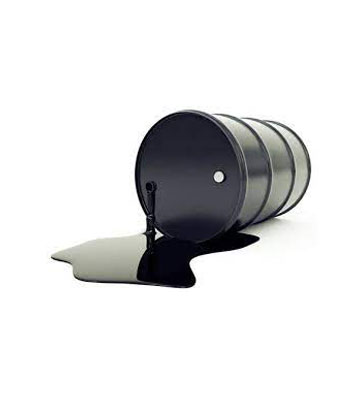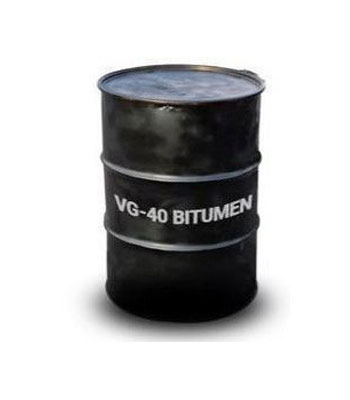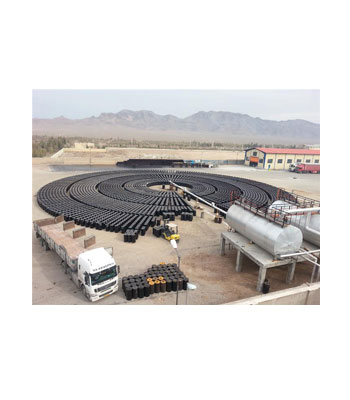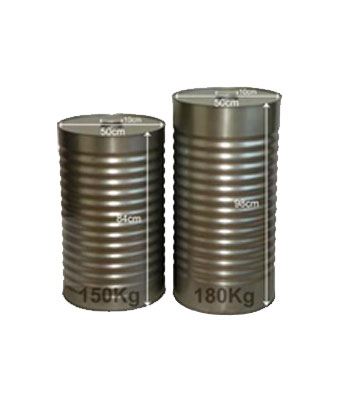Performance Grade (PG)-Bitumen & Tar
0,00 €From October 1987 to March 1993, Strategic Highway Research Program (SHRP) was conducted in the United States. The program was focused on the development of new methods for assessing the performance of bitumen binders. The research resulted in the development of a new method known as Superior Performing Asphalt Pavements (Superpave).
The main specifications of this method included:
Using the efficiency criterion for bitumen binders and asphalt concrete
Considering climatic conditions in application of bitumen
The problems studied in this method are as follows:
Winter low-temperature bitumen cracking not related to loading
Bitumen fatigue cracking due to loading
Summer high-temperature bitumen deformation due to loading
The primary objective behind determining the new specifications was to facilitate the purchase of bitumen products of better quality because these specifications will clearly describe the product for potential buyers. The new specifications also guarantee the proper performance of bitumen in coating. Climatic conditions are important factors in the efficiency of coating, but limited research has been conducted on this issue due to limited time and quite similar weather conditions. Moreover, they would not be precise if the loading factor is not taken into consideration. The producers all around the world, has been started to produce this type of bitumen which POC is a prominent in this regard. Having installed SHRP systems, Pasargad Oil Company is capable of selling bitumen to its customers based on PG method. It worth to remind that in the past, penetration was used as a factor for bitumen grading. In performance grade, the focus is on the mechanical specification of bitumen while in penetration grade, experimental parameters are involved. In Iran, pen-grade is more common, but in some cases, PG has better be used for a better performance. Today, a PG is defined for polymer modified bitumen and pure bitumen based on environmental conditions and temperature. A wider PG range means higher resistance and more favorable specifications. Pasargad Oil Company has the capacity to produce all these grades. This company first conducted climate zoning in Iran to specify the appropriate bitumen for different geographical zones.
Performance Grade (PG)-Bitumen & Tar
0,00 €From October 1987 to March 1993, Strategic Highway Research Program (SHRP) was conducted in the United States. The program was focused on the development of new methods for assessing the performance of bitumen binders. The research resulted in the development of a new method known as Superior Performing Asphalt Pavements (Superpave).
The main specifications of this method included:
Using the efficiency criterion for bitumen binders and asphalt concrete
Considering climatic conditions in application of bitumen
The problems studied in this method are as follows:
Winter low-temperature bitumen cracking not related to loading
Bitumen fatigue cracking due to loading
Summer high-temperature bitumen deformation due to loading
The primary objective behind determining the new specifications was to facilitate the purchase of bitumen products of better quality because these specifications will clearly describe the product for potential buyers. The new specifications also guarantee the proper performance of bitumen in coating. Climatic conditions are important factors in the efficiency of coating, but limited research has been conducted on this issue due to limited time and quite similar weather conditions. Moreover, they would not be precise if the loading factor is not taken into consideration. The producers all around the world, has been started to produce this type of bitumen which POC is a prominent in this regard. Having installed SHRP systems, Pasargad Oil Company is capable of selling bitumen to its customers based on PG method. It worth to remind that in the past, penetration was used as a factor for bitumen grading. In performance grade, the focus is on the mechanical specification of bitumen while in penetration grade, experimental parameters are involved. In Iran, pen-grade is more common, but in some cases, PG has better be used for a better performance. Today, a PG is defined for polymer modified bitumen and pure bitumen based on environmental conditions and temperature. A wider PG range means higher resistance and more favorable specifications. Pasargad Oil Company has the capacity to produce all these grades. This company first conducted climate zoning in Iran to specify the appropriate bitumen for different geographical zones.
Performance Grade (PG)-Bitumen & Tar
0,00 €From October 1987 to March 1993, Strategic Highway Research Program (SHRP) was conducted in the United States. The program was focused on the development of new methods for assessing the performance of bitumen binders. The research resulted in the development of a new method known as Superior Performing Asphalt Pavements (Superpave).
The main specifications of this method included:
Using the efficiency criterion for bitumen binders and asphalt concrete
Considering climatic conditions in application of bitumen
The problems studied in this method are as follows:
Winter low-temperature bitumen cracking not related to loading
Bitumen fatigue cracking due to loading
Summer high-temperature bitumen deformation due to loading
The primary objective behind determining the new specifications was to facilitate the purchase of bitumen products of better quality because these specifications will clearly describe the product for potential buyers. The new specifications also guarantee the proper performance of bitumen in coating. Climatic conditions are important factors in the efficiency of coating, but limited research has been conducted on this issue due to limited time and quite similar weather conditions. Moreover, they would not be precise if the loading factor is not taken into consideration. The producers all around the world, has been started to produce this type of bitumen which POC is a prominent in this regard. Having installed SHRP systems, Pasargad Oil Company is capable of selling bitumen to its customers based on PG method. It worth to remind that in the past, penetration was used as a factor for bitumen grading. In performance grade, the focus is on the mechanical specification of bitumen while in penetration grade, experimental parameters are involved. In Iran, pen-grade is more common, but in some cases, PG has better be used for a better performance. Today, a PG is defined for polymer modified bitumen and pure bitumen based on environmental conditions and temperature. A wider PG range means higher resistance and more favorable specifications. Pasargad Oil Company has the capacity to produce all these grades. This company first conducted climate zoning in Iran to specify the appropriate bitumen for different geographical zones.
VG Bitumen-Bitumen & Tar
0,00 €Bitumen is graded based on absolute viscosity at 60 ºC or kinematic viscosity at 135 ºC. The SI physical unit of dynamic viscosity is Poise and kinematic viscosity is expressed in Centi Stokes. Pure bitumen has been graded based on AASHTO-M226 and ASTM-D3381 standards. Tables 1-1 to 1-6 indicate tests and criteria.
VG Bitumen-Bitumen & Tar
0,00 €Bitumen is graded based on absolute viscosity at 60 ºC or kinematic viscosity at 135 ºC. The SI physical unit of dynamic viscosity is Poise and kinematic viscosity is expressed in Centi Stokes. Pure bitumen has been graded based on AASHTO-M226 and ASTM-D3381 standards. Tables 1-1 to 1-6 indicate tests and criteria.
VG Bitumen-Bitumen & Tar
0,00 €Bitumen is graded based on absolute viscosity at 60 ºC or kinematic viscosity at 135 ºC. The SI physical unit of dynamic viscosity is Poise and kinematic viscosity is expressed in Centi Stokes. Pure bitumen has been graded based on AASHTO-M226 and ASTM-D3381 standards. Tables 1-1 to 1-6 indicate tests and criteria.
Viscosity Grade Bitumen
0,00 €This type of bitumen is utilized to stain cracked surfaces and spray various applications. It can be an alternative for the penetration grade bitumen 80-100 in very cold areas. This category of bitumen is also employed to produce emulsion and modified bitumen.
Viscosity Grade Bitumen
0,00 €This type of bitumen is utilized to stain cracked surfaces and spray various applications. It can be an alternative for the penetration grade bitumen 80-100 in very cold areas. This category of bitumen is also employed to produce emulsion and modified bitumen.
Viscosity Grade Bitumen
0,00 €This type of bitumen is utilized to stain cracked surfaces and spray various applications. It can be an alternative for the penetration grade bitumen 80-100 in very cold areas. This category of bitumen is also employed to produce emulsion and modified bitumen.
Viscosity Grade Bitumen & Tar Products
0,00 €Viscosity Grade Bitumen which is produced during the process of oxidation of vacuum bottom in distillation tower and is categorized based on absolute viscosity at 60 ºC or kinematic viscosity at 135 ºC. There are four grades VG-10, VG-20, VG-30 & VG-40. The main common usage of VG is in road construction, water proofing, building construction industries and also in cutback bitumen production.
Product Types
- Viscosity Grade 40-Viscosity Grade
- Viscosity Grade 30-Viscosity Grade
- Viscosity Grade 20-Viscosity Grade
- Viscosity Grade 10-Viscosity Grade
Viscosity Grade Bitumen & Tar Products
0,00 €Viscosity Grade Bitumen which is produced during the process of oxidation of vacuum bottom in distillation tower and is categorized based on absolute viscosity at 60 ºC or kinematic viscosity at 135 ºC. There are four grades VG-10, VG-20, VG-30 & VG-40. The main common usage of VG is in road construction, water proofing, building construction industries and also in cutback bitumen production.
Product Types
- Viscosity Grade 40-Viscosity Grade
- Viscosity Grade 30-Viscosity Grade
- Viscosity Grade 20-Viscosity Grade
- Viscosity Grade 10-Viscosity Grade












